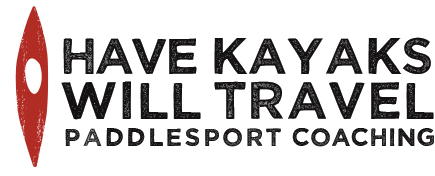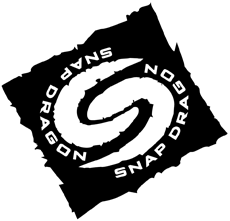We gently paddle the surface of the lake, leaving no trace behind. As soon as we unloaded out boats near the 59th Street Harbor this morning, we could tell how dramatically the season has changed. The sun angled low through the crisp fall leaves still clinging to twigs overhead; the algae that made the ramp slippery during the summer was gone; fishermen were casting from the barren piers in the outer harbor; there was only one boat left in the inner harbor, and it looked forlorn. We paddled out in the middle of the channel with no concern for traffic because there were no boats in sight.The wind was about 10 knots out of the northeast, causing waves mostly in the two- to four-foot range, which collided with one another and built a little higher off the breakwater that protects 63rd Street Beach. The surface water temperature is in the mid to upper 50s now–poagie weather.We didn’t have a lot of time, so we paddled south toward Rainbow Beach, enjoying the crashing of waves hitting the boulders along the shore, and then back north to 63rd Street Beach, where we caught a few nice rides on fairly gentle surf. We saw three boats in the distance headed for dry dock, and interrupted a gaggle of geese floating near the harbor mouth.Lake Michigan must get lonely in the autumn. Perhaps that’s why she thrashes her shores in the fall before subsiding under a blanket of ice in the winter. Either that or she revels in her solitude after a summer of assaults by jet skis, motor boats, tour boats and yachts. We like to think she enjoys our company, at least, as we gently paddle her surface, leaving no trace...
Knot a good situation
On Friday afternoon, while we were paddling, someone broke into our car and stole both of our wallets. We returned to a broken car window and a rash of urgent tasks: cancel the cell phone and credit cards, rekey the house locks, replace the drivers’ licenses and a myriad other cards. Since then, every day yields a new realization of something we no longer have: library cards, ACA instructor cards, insurance cards, a favorite green pen.Today we realized the thieves also had the cool set of knot cards we bought with our paddling.net paddle perks and the rope we used for practicing clove hitches and bowlines. Somewhere, some thief is practicing tying beautiful bowlines. Note to selves: Bring wallets in boats. Keep house key away from IDs with home address. Renew paddling.net...
How to make your own short tow
When I was preparing to go out to Sea Kayak Georgia a few years ago to do some training before my Instructor Development Workshop, I needed a short tow setup. So I went out and bought a good-looking one for about $40.During the second day of training, Ronnie Kemp and I were working on rescues. I was required to quickly release my tow belt and attached short tow in surf. The brand new short tow slid off the belt and sank.Ronnie later showed me a type of short tow that can be made for a fraction of the cost of a commercial system. The parts are available at many outdoor sporting goods stores (or online–I’ve placed links below). The set-up connects to the deck lines in front of the paddler, where it’s easy to reach, and uses an ingenious quick-release highwayman’s hitch, which allows it to be disconnected from the boat easily and quickly (essential for any tow system).This is one of the first pieces of gear Sharon and I have made for ourselves; we find that the more we create and repair our own gear, the better we understand it and can make it suit our needs and the conditions we paddle in.So here is the short tow system we use and how we put it together. Make sure you have the training to use it appropriately, and let us know what you think or what modifications you make.–Alec Materials:Approximately 5 feet of 6 mm. braided nylon line ($2)11 cm. Petzl runner ($4)Petzl spirit straight gate carabiner ($9)Or Stohlquist paddle biner ($20)Rope end stopper with 1/4″ hole ($4 a pack) All the materials you’ll need to create a short tow set-up. First, seal the ends of the rope (if you had to cut it) using a flame: Next tie a figure-of-eight to connect the rope to the runner: Figure-of-eight follow-through connecting the rope to the runner. For instructions on this knot, click here . Now connect the runner to the carabiner. The runner prevents the rope from slipping off the carabiner. Attach the rope-end stopper to the other end of the line. (Or, if you prefer, use any small ball or a monkey’s fist knot.) Your short tow is complete! Now it’s time to attach it to your deck lines. Here is one way to use a highwayman’s hitch to connect it. This is, essentially a series of slip knots, but they need to be done correctly in order to work properly. (You can also check out this site for an excellent video on tying a highwayman’s hitch .) It’s really strong. It can hold a lot of weight on the carabiner end: And it can be released...
A dam good day
Saturday was the annual Geneva Kayak Center Kayak Fest, a day of free classes and an evening of socializing–sort of like a mini symposium but with boats and gear on sale and without the sleepover or registration fee.We taught many classes at Geneva this year, so we were psyched to see some of our students again. We were also eager to see some of our fellow instructors, though we anticipate seeing them in the surf on Lake Michigan in the coming weeks (fall is surf season in Chicago) and then in the pool on Wednesday evenings during the winter.It was a beautiful fall day. Some of the trees along the banks of the Fox River were rich hues of orange and gold; geese and herons adorned the water and banks. But best of all, the river was full of kayakers, many of them beginners or near-beginners, eager to learn new skills before the end of the paddling season. Students who attended Kayak Fest were rewarded with free classes and lovely weather. For us, the season isn’t quite over. Dry suits and sufficient skill enable us to safely paddle into November and December. In the coming weeks, we’ll chronicle some of the beauty of Lake Michigan settling into the solitude of its colder season.But for now, we’re enjoying looking at the photos from Saturday. Funny, but people are smiling in all of them! Paul Doughty in a rare moment on the other side of the...
Local paddler profiles, part two
Sharon with Lyn on a Chicago beach. Every community has its unsung heroes—people who make a difference without fanfare. The kayaking world is full of such people. Often they’re instructors who patiently teach a wide range of students, making them better and safer paddlers. In the coming months, we plan to profile some of these people, with a focus on ones in the midwest. Lyn helps a novice paddler get settled in his boat at the Great Lakes Sea Kayak Symposium. Lyn Stone is our first victim in this endeavor. Sharon first met Lyn in 2006 at Ladies of the Lake, a kayaking symposium in Michigan’s Upper Peninsula. (It moves around. This year, it will be held on Drummond Island from August 21 to 24. Get the details at Down Wind Sports.) The meeting was classic Lyn (and Sharon, for that matter). Sharon showed up for a BCU three-star training without her spray skirt, which was hanging back in the campsite several miles from the put-in. Lyn, true to form, had a spare and offered it to Sharon.We later learned that Lyn has a spare or a repair for practically every essential piece of gear. She’s has a remarkable depth of knowledge about kayaking, but she shares it selectively, not boastfully, when it’s requested or needed. And she’s bicultural, in the paddling sense of that term; she prefers a Greenland stick but teaches mainly with a Euro paddle.Alec first met Lyn at a Geneva Kayak Center staff training the following year, where he was impressed by her down-to-Earth attitude. But best of all, she’s always willing to help out, whether a friend needs new deck rigging or a student needs coaching.Lyn is part of our instructor cohort. She and Sharon were certified together by Sam Crowley in September, and the three of us have trained and taught together since then. We rely on one another as we refine our ideas, reflect on our experiences, and grow as paddlers and instructors.After we returned from Michigan’s east coast, we spent one day paddling our home waters with Lyn. We put in at the 59th Street harbor and paddled past the fishermen and docked motorboats and out onto the lake. We retrieved balls and balloons that children had lost while playing at the 63rd street beach, and took at detour into the 57th Street harbor to visit Maynard Welch, the retired harbormaster who continues to best represent the spirit of that lovely harbor. (For a profile of Maynard, check out the Nov. 22, 2005 issue of the Chicago Tribune.) Then we paddled down past The Point, where we held our engagement party 20 years ago. The water was a little bumpy, with...
Too many things left unwritten
This is a bittersweet morning. We’re packing the car and trailer and waiting for Robert to see us off before we head up to Ontario. It’s been a great week; it’s hard to say goodbye.There are so many thing we haven’t written about: the rescue class, the rolling class, casual paddles in the Chester River, the presentation we gave about Great Lakes paddling opportunities, Jeremy and Noah flying kites, a day trip to Cape Henlopen State Park, and more.But we can’t leave before writing a little bit about Hannah’s role during our time in Queenstown. She co-taught the “women on the water” class, bringing to it her playful spirit and her remarkable ability to work with all kinds of people. Her paddling skills are good enough that she can provide clean demonstrations, clear explanations and helpful critiques (essentials of kayak instruction), but that’s just the beginning. She can also inspire and motivate students with her enthusiasm and knack for saying just the right thing at just the right time. And she’s fun. Hannah demonstrating the solid support provided by rafting up. Lest things get too serious, Hannah gets students to practice their strokes while sitting on their back decks. When she wasn’t teaching, Hannah was either paddling around with Noah sitting on her back hatch, chatting with Kerrie, or practicing guitar. But when the opportunity arose to teach more, she took it. Robert was providing a kayak program at a local camp four mornings this week. Hannah went along to help, bringing to the campers her same set of paddling and people skills.It’s delightful watching her evolve as both a paddler and an instructor. She’ll no doubt be both proud and a little embarrassed about this post, but we had to write it. No iPod Left Behind: Hannah shares her playlist with...
taking risks, earning rewards
Robert, Kerrie and Noah Schrack. We’ve been meaning to write a little bit about our hosts, Robert and Kerrie Schrack. It’s a daunting task because they’ve been so generous and impressive on so many fronts. So this post will attempt to address what’s been missing from previous posts: some sense of who brought us here. Robert and Kerrie are the owners of Adventure Crafters in Queenstown, MD. They have a small but impressively stocked pro shop and offer classes and trips. Check out their website at www.adventurecrafters.com. Robert and Alec met during their Instructor Certification Exam at Sea Kayak Georgia, one of the premiere places for sea kayak training. They’re both natural athletes and generous spirits, so they hit it off immediately. Adventure Crafters is in its second year here in Queenstown, after a year and a half or so in Westchester, PA. Robert traded in his landscaping business to invest full-time in kayaking, with Kerrie assisting him in everything from running the shop to leading the evening paddles. It’s an impressive balancing act: work and family, time on water and time running the business, making a living and being true to their values. They’re walking all those tightropes admirably. We’ve been staying with them for almost a week now, sharing meals, teaching classes, messing around on the water, hanging out and sharing stories. We’ve met an assortment of the students they attract, who seem to share the down-to-earth, honest spirit that Robert and Kerrie bring to their business. It’s been a great pleasure to see this small, family business in its early stages and help for one short week. One of the hazards of teaching and guiding full-time is that you rarely get to go out and paddle for fun, and when you do, you usually do so alone. This evening, we paddled out with Robert into a pretty stiff head wind until the darkening clouds grew a little too ominous. We surfed back home to the sounds of thunder, looking over our shoulders at some very dramatic skies. As we approached Eastern Neck Island, we saw sheets of raining pouring down from the clouds ahead of us. Almost back in safe harbor, the waves subsided and we knew we had outpaddled the storm. It seemed an apt metaphor for what makes anything in life meaningful. Often you have to take a risk to gain a reward. Whether it’s a stunning sky, an exciting ride or a meaningful life, you have to take some chances. We’re awfully glad that Robert and Kerrie took a chance on Adventure Crafters and included us in their...
Why a women’s class?
Most classes begin with individual boat fit so that students feel comfortable in their kayaks and can control them well. Saturday’s “women on the water” class was, in many ways, typical of other all-female classes I’ve taken and taught. The participants ranged from timid to almost fearless, from novice to intermediate, from goal-oriented to open-to-anything. But what they all had in common was this: They wanted to learn in a supportive environment where nobody would judge them, and that’s what an all-women’s class meant to them.It’s funny, when you think about. Are women any less judgmental than men? Not necessarily. But they often are more supportive of one another, particularly when they are overcoming their fears and gaining new skills. In a mixed gender class, you’re less likely to see a spontaneous round of applause after someone screws up her confidence and finally attempts a scoop rescue on a fellow paddler. You’re more likely to see a someone hanging back and watching instead of trying new skills. But in a women-only class, there’s a lot of encouragement and positive reinforcement. Students root for each other and celebrate each other’s accomplishments. It’s a case of gender camaraderie at its best.Our Saturday class began with two students refusing to do a “wet exit.” One saw no need; the other was afraid. Sizing up the conditions (warm water and air, calm seas, no spray skirts), I hastily devised the “modified wet exit,” in which I would hold the student’s hands while she flipped her boat and came out. Both students agreed to do this and executed it easily, proving to themselves and to me that they would come out of their boats if they accidentally capsized.By contrast, one student came to class with the wet exit high on her list of desired skills. She had never done one and was a little afraid she wouldn’t be able to. After she pulled one off, she was ecstatic, and kept doing it over and over just to reinforce the skill. Her pride was infectious; the excitement of the whole class ratcheted up several notches.The rest of the class entailed a mix of teaching and playing, with the games reinforcing the skills. For example, after teaching turning strokes and draw strokes, we played kayak basketball, in which students attempted to toss tennis balls into each other’s cockpits. When they missed their targets, they had to retrieve the balls from the water by using the strokes they had learned. The beauty of doing this through games is that the stroke practice happens naturally. The students laugh and focus on what they’re trying to accomplish. The paddle skills are no longer an end, but a means to...







